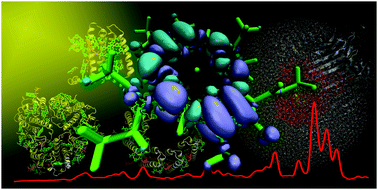Limits and potentials of quantum chemical methods in modelling photosynthetic antennae
Abstract
Advances in electronic spectroscopies with femtosecond time resolution have provided new information on the excitonic processes taking place during the energy conversion in natural photosynthetic antennae. This has promoted the development of new theoretical protocols aiming at accurately describing the properties and mechanisms of exciton formation and relaxation. In this perspective, we provide an overview of the quantum chemical based approaches, trying to underline both the potentials of the methods and their weaknesses. In particular three main aspects will be analysed, the quantum mechanical description of excitonic parameters (site energies and couplings), the incorporation of environmental effects on these parameters through hybrid quantum/classical approaches, and the modelling of the dynamical coupling among such parameters and the vibrations of the pigment–protein complex.

- This article is part of the themed collection: Measurement and prediction of quantum coherence effects in biological processes

 Please wait while we load your content...
Please wait while we load your content...